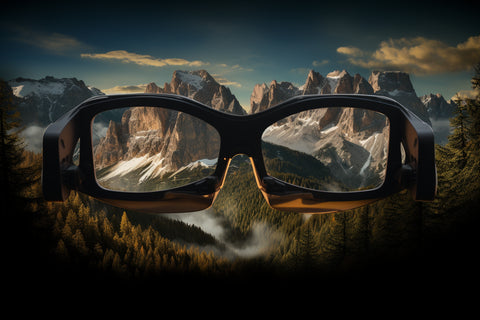In the ever-evolving landscape of the hotel industry, the integration of spatial content stands as a beacon of innovation, poised to redefine guest experiences and operational efficiency. Let's delves into how spatial content is not just an emerging trend but a transformative tool that will benefit the hotel industry significantly.
Understanding Spatial Content in Hospitality
Spatial content, which encompasses technologies like virtual reality (VR), augmented reality (AR), and 3D modeling, offers an immersive and interactive experience that goes beyond traditional visual and auditory media. In the context of the hotel industry, it provides a unique opportunity to enhance guest experiences and streamline hotel operations.
Enhancing Guest Experiences

Virtual Tours and Pre-Stay Engagement
Imagine giving potential guests a virtual tour of your hotel, allowing them to walk through the lobby, explore rooms, or even experience the view from a balcony before they book. This level of engagement can significantly increase booking confidence and customer satisfaction. 360 content has been around for years with little adoption, but with Apple's Vision Pro, spatial content is finally to a level that consumers will enjoy and use.
Personalized In-Room Experiences
Hotels can leverage spatial content to offer customizable in-room experiences. Guests could choose themes or settings for their rooms, such as a tranquil beach or a serene forest, enhancing their stay with personalized, immersive environments.
Interactive Navigation and Amenities
Spatial content can also be used for interactive navigation within the hotel, guiding guests to their rooms, facilities, or points of interest. This technology could further extend to interactive experiences with hotel amenities, like augmented reality menus or virtual concierge services.
New Meaning of Staycation
In the realm of hospitality innovation, hotels now have the opportunity to transcend traditional boundaries by crafting digital replicas of their most exquisite rooms and amenities. This concept goes beyond the familiar virtual tour, inviting guests to immerse themselves in a unique digital experience directly from their homes. Picture this: a guest lounges in their living room, yet digitally, they're nestled in the plush comforts of the hotel's premier suite, enjoying a movie. Or, while taking a bath at home, they find themselves enveloped in the serene ambiance of the hotel's luxurious spa, all through the magic of spatial content. This approach not only enhances engagement but also creates a way for the hotel to remain top of mind when the guest is at home.
Streamlining Operations and Training
Efficient Staff Training
Training hotel staff using spatial content can be more efficient and engaging. New employees could virtually experience different scenarios, from handling guest requests to managing emergency situations, ensuring a well-prepared workforce.
Enhanced Facility Management
Spatial content can aid in facility management by providing 3D models of the hotel for maintenance and planning. This can lead to more efficient use of space and quicker resolution of maintenance issues. Spatial content for facility management has become an important role in BMW's operations. Now, it's time for the hotel industry to do the same.
Conclusion
The integration of spatial content into the hotel industry marks a significant step towards a more innovative, efficient, and guest-centric future. This technology not only elevates the guest experience but also streamlines operations, enhances staff training, and promotes sustainable practices. As we embrace this technological advancement, the hotel industry is poised to offer experiences that are not only memorable but also deeply impactful, setting a new standard in hospitality.



